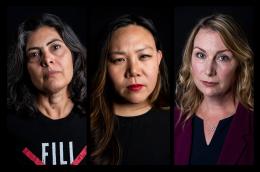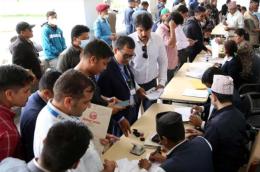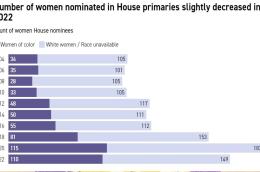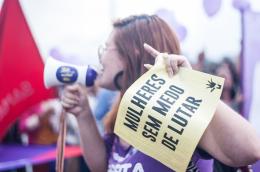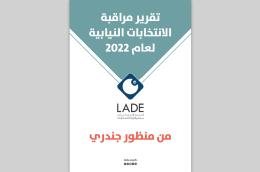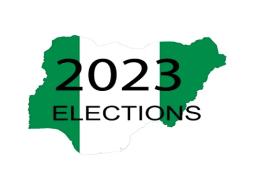Elections
Main navigation
ARVADA, Colo. — Not long after the Supreme Court ended the constitutional right to abortion, Robin Kupernik and Elizabeta Stacishin met for lunch and then went for a walk through the Denver Botanic Gardens. “We were both angry,” Kupernik later recalled. “We both said at the same time, ‘This is not about babies, this is about keeping women down.’”
Kupernik, 57, and Stacishin, 53, were spurred to political activism by the election of Donald Trump in 2016. But for much of this year, they had been sensing a lack of energy on the left — an absence of the kind of commitment on the part of voters like themselves who had propelled Democrats to victories in 2018 and 2020. Then came the June decision in Dobbs v. Jackson Women’s Health Organization. Both women said the abortion case persuaded them to redouble their efforts for the 2022 campaign.
Click here to read the full article published by The Washington Post on 8 October 2022.
Almost all political parties have an extremely lower ratio of women to men candidates fielded under the first-past-the-post category in the upcoming elections.
Kathmandu: The preliminary data released by the Election Commission, the country’s election management body, shows that few women are contesting in the upcoming parliamentary elections in Nepal.
According to the Commission, a total of 2,526 candidates have filed their candidacies under the first-past-the-post (FPTP) category for the upcoming elections of federal and provincial parliament. Out of them, 2,291 are males while only 235 (just 10.25 percent) are females.
Click here to read the full article published by Nepal Live Today on 11 October 2022.
Of the 259 women nominated in House primaries this year, 43 percent are women of color — the highest percentage for the demographic in recent cycles.
While that’s an indicator of progress, says Kelly Dittmar, director of research and scholar at the Center for American Women and Politics at Rutgers University, it’s far from representative of the increasing racial and ethnic diversity of the nation. Plus, women only made up around 30 percent of House nominees this year — meaning it’s far from gender parity.
With most primaries completed for the 2022 cycle (sorry Louisiana), CAWP has compiled the number of women nominated to the general election. A record number of women are nominees for governor and state legislatures, but the same can’t be said for the House and Senate. The record for women House nominees was set last cycle, when 583 ran and 298 were nominated. This year, 582 ran and 259 were nominated.
Click here to read the full article published by Politico on 3 October 2022.
Despite being 53% of eligible voters, participation of women in Brazilian politics is still much lower compared to men. A law created in the 1990s aimed to increase the number of female candidates per election, but the law has been abused by politicians to syphon resources and register ghost candidates.
Originally passed in 1995 and updated in 1997, the law demands that all political parties must have 30% female representation among their candidates and must allocate at least 30% of electoral funds towards women candidates. (In Brazil, political parties are publicly funded, and distribution of public funds is related to each party’s parliamentary representation).
What we’ve witnessed in the last two elections has been a high number of ghost candidates — women who were registered as candidates by political parties only to fulfill the gender quota but don’t actually run for election.
Click here to read the full article published by Brazil Reports on 1 October 2022.
In in the context of promoting democracy, equality and equal opportunities, UNDP partnered with the Lebanese Association for Democratic Elections (LADE) to develop a report on observing parliamentary elections from a gender perspective in order to promote women’s rights and political participation.
The report highlights the obstacles and gaps women face and provides details the social, cultural, political and economic obstacles and challenges that restrict their access to Parliament. The report assesses the participation of female voters, women candidates and political parties in the electoral process.
This activity is funded by the European Union, United States Agency for International Development, and German Cooperation.
Source: UNDP
FOLLOWING the release of the final list of presidential and national assembly candidates for the 2023 general election, the Women In Politics Forum (WIPF), on Monday, lamented the low number of female candidates contesting the 2023 general election.
According to an analysis from a report by the Forum titled ‘Research on Interrogating the Policy Interventions to Increase Women’s Participation in Governance in Nigeria,’ there are only 381 women among the total of 4,259 contestants for the presidential and the National Assembly seat in next year’s polls.
Click here to read the full article published by Vanguard on 26 September 2022.
